Fragrant Sumac (Rhus aromatica var. aromatica) of the Sumac (Anacardiaceae) family is a dioecious, low-growing, non-suckering, non-poisonous shrub with tiny yellow flowers that emerge before the leaves. The genus name Rhus is the old Greek and Latin name for sumac. The specific epithet is Latin for “aromatic” or “fragrant,” describing the strong and pleasant scent of the crushed leaves. In the U.S., Fragrant Sumac, at the broader species level, occurs across most of the country, but is generally absent from the Pacific Northwest, upper Midwest, Maine, and the Coastal Southeast. In Arkansas, the species occurs statewide except for portions of the Mississippi Alluvial Plain. Habitats are widely varied, the plants occurring on practically any soil type, dry to moist, with a preference for dry, sunny to partially shaded, rocky sites, such as woodland margins, prairie slopes, and rights-of-way.
Young plants have erect wiry stems, but in subsequent years, stems often become ground-hugging and wide-spreading. Those in contact with soil are anchored by shallow, fibrous roots, as well as by longer and deeper roots. Stems and their branches may be 12+ feet long with each stem having 1-4 ascending, smooth, brownish red branches that may be 3-5 feet long. Older stems become dull brown and roughened by elongate corky lenticels (air pores). A mature plant may have a dozen or more radiating main stems and hundreds of branches that form a dense thicket, especially when mixed with other shrubs and vines. When a larger stem is cut through, it visibly extrudes a sticky sap, containing concentrated tannin.


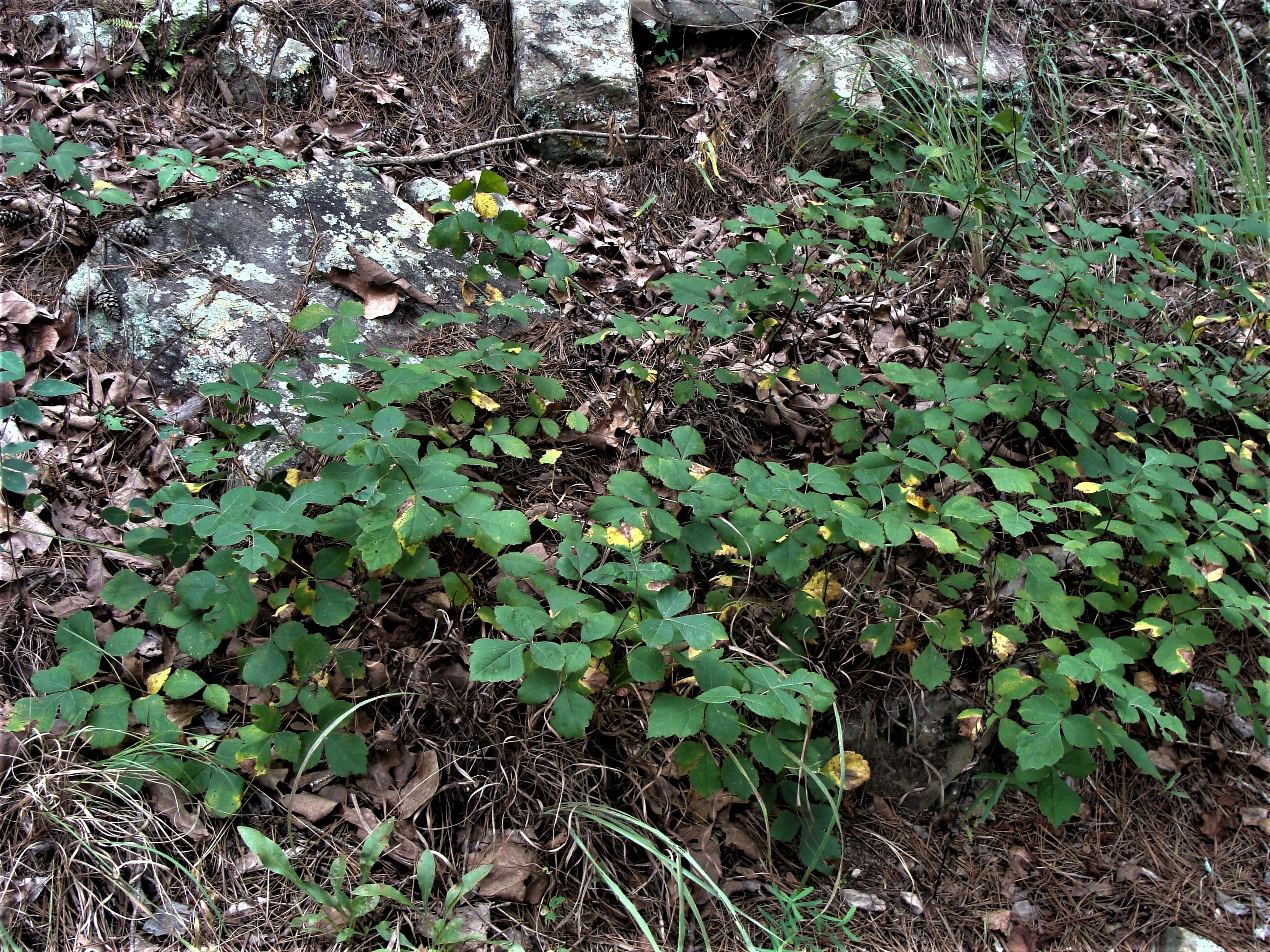
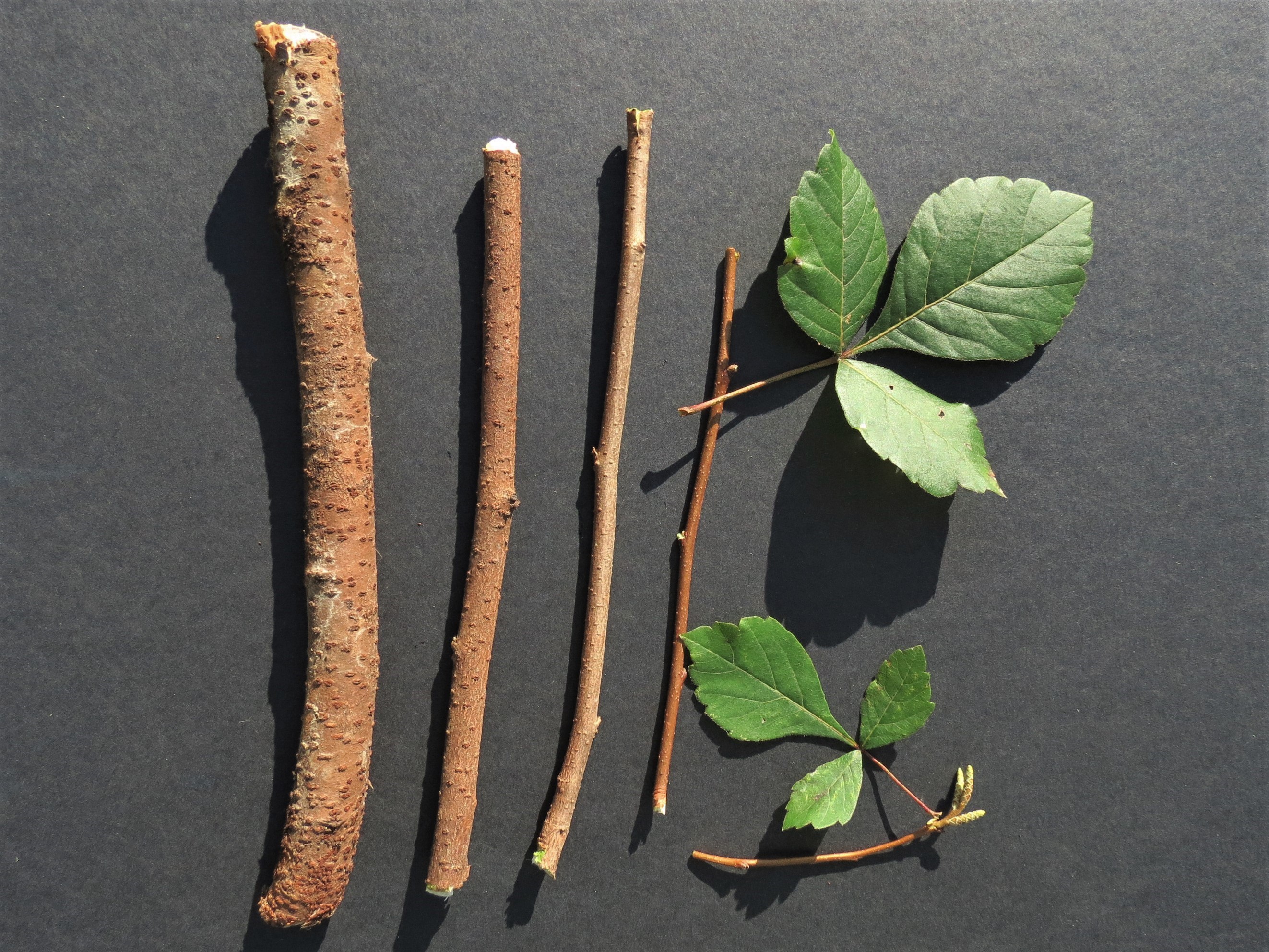
The cone-like inflorescence appears in mid-summer at the ends of the current year’s floral twigs in axils of the uppermost leaves. The following spring (mid-March), twigs bear flowers and (in female or pistillate plants) immature fruits as the leaf-bearing branches appear. New branches are initially bright green (in mid-April) and elongate to a few inches or to as much as 3 feet. New leaves are puberulent on the upper surface, with longer hairs along the veins below––all lost by mid-summer. Floral twigs die by mid- to late summer, after fruits mature.

Alternate trifoliate leaves, with a terminal leaflet and an opposite pair of smaller lateral leaflets, expand to 5 inches long (including a slender petiole to 1½ inches) and 4½ inches wide. Terminal leaflets tend to be obovate, lateral leaflets oval to elliptic and asymmetric. The terminal leaflet is strongly attenuate or wedge-shaped at the base and sessile to sub-sessile at its junction with the lateral leaf pair––a character that quickly separates Fragrant Sumac from look-alike Poison-Ivy and Poison Oak. Leaflet margins above the middle are coarsely toothed (crenate-serrate) with acute tips. Prominent pinnate venation is recessed above and expressed below. Leaflet blades, in age, are moderately thick and glabrous, medium green above and paler below; petioles tend to be reddish on the upper side. In the fall, leaf color changes to bright and decorative shades of orange and red.
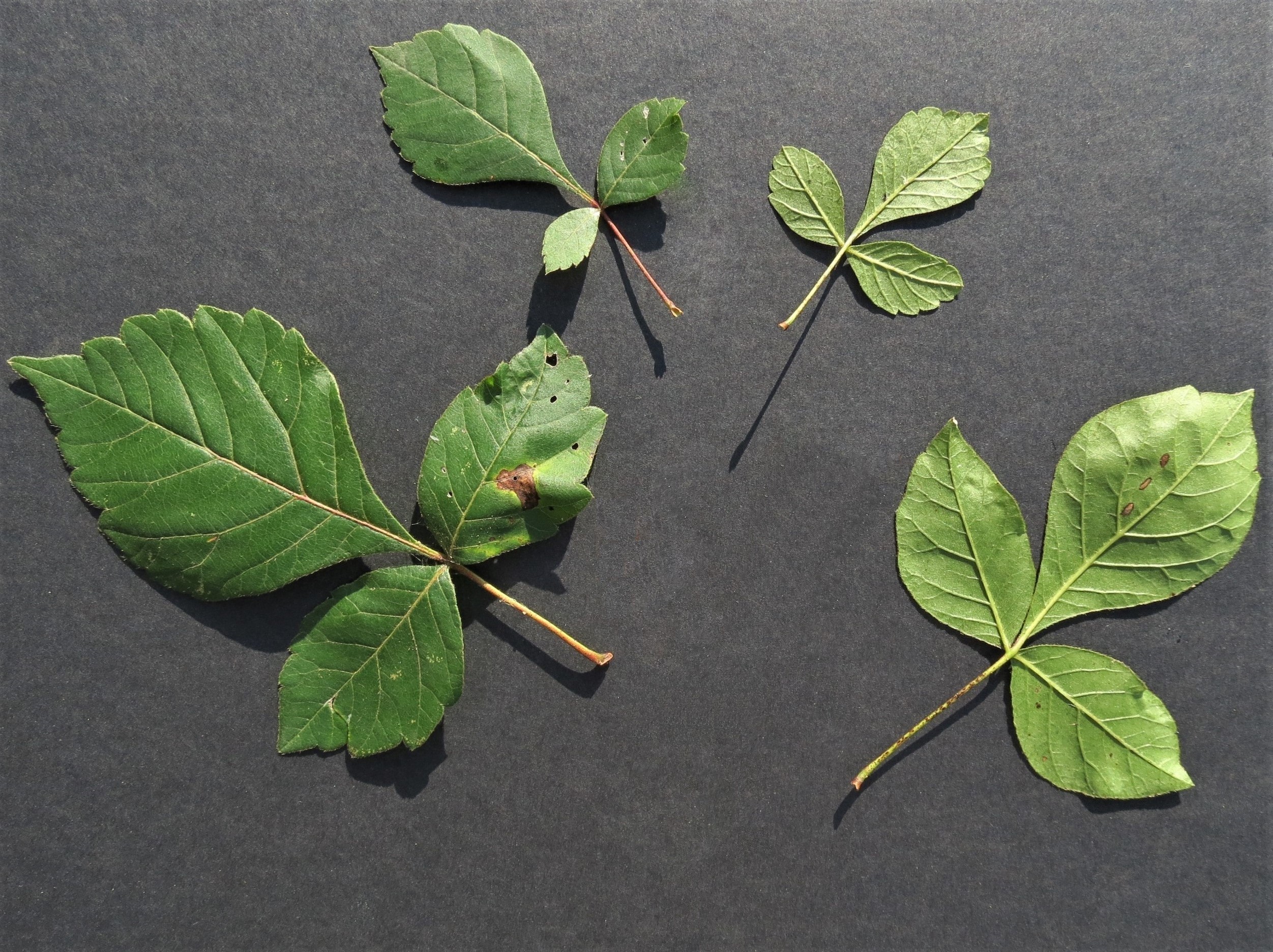
Like most (if not all) species of Rhus (as well as Toxicodendron), Fragrant Sumac is dioecious––staminate and pistillate flowers are usually borne on separate shrubs, although plants may occasionally bear some perfect flowers (polygamo-dioecious). Closely packed flowers bloom on short compact spikes (to 2½ inches long) on twigs that appeared the previous summer. Flowers are initially hidden behind tightly clasping, dark brown, rhombic bracts that have a thick apical fringe of short tannish hairs. Spherical buds extend out from behind the bracts. Flowers uniformly unfurl all-around the spike. At the time of bloom, in March, shrubs are leafless.

The small, bright yellow flowers are bowl-shaped with 5 sepals and 5 petals, as well as 5 orange nectary discs at the base of the petals. The oval to elongate-triangular yellow sepals are brown at the tip. In full bloom, the petals extend well above the sepals. Sepals and petals join below to form a short and slim greenish base. Pistillate flowers have a single compound pistil, comprising a greenish, ovoid, pubescent ovary and 3 sub-sessile yellow styles with knob-like stigmas. Staminate flowers have 5 stamens between petals and nectary discs. The pale yellow filaments arch inward so that the dark yellow anthers are directed toward the flower center.


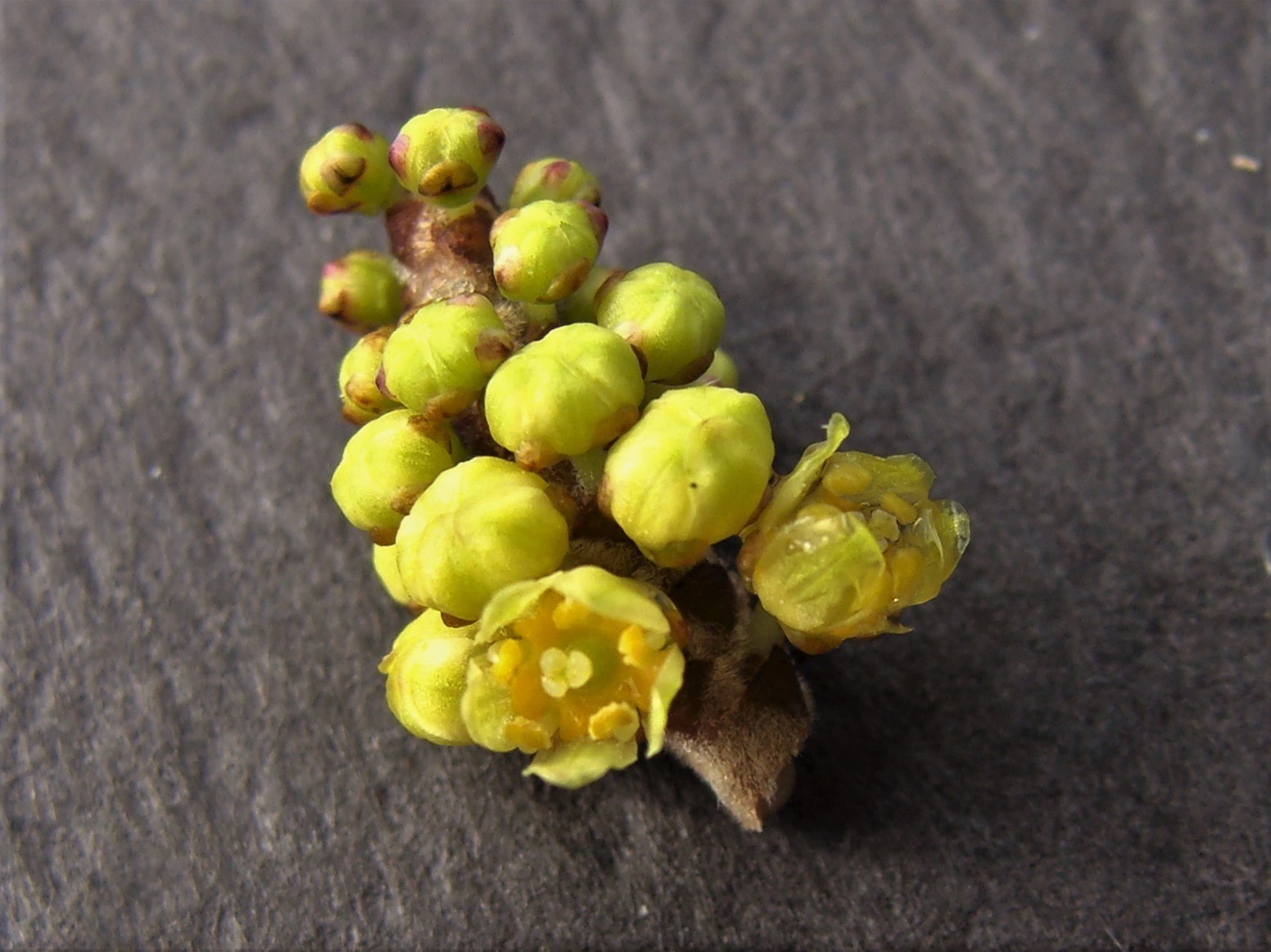
Fertilized flowers develop spherical (3/16 inch wide) fruits that look spiky with their dense pubescence of straight red and white hairs. Fruits (drupes), with hard, smooth stones (⅛ inch long), ripen to bright red in May, when they are relished by birds and small mammals. If uneaten, they shrivel to a dark brown (in June). Fertile twigs often persist into the next fruiting season and may, at that time, still retain remnants of fruits.

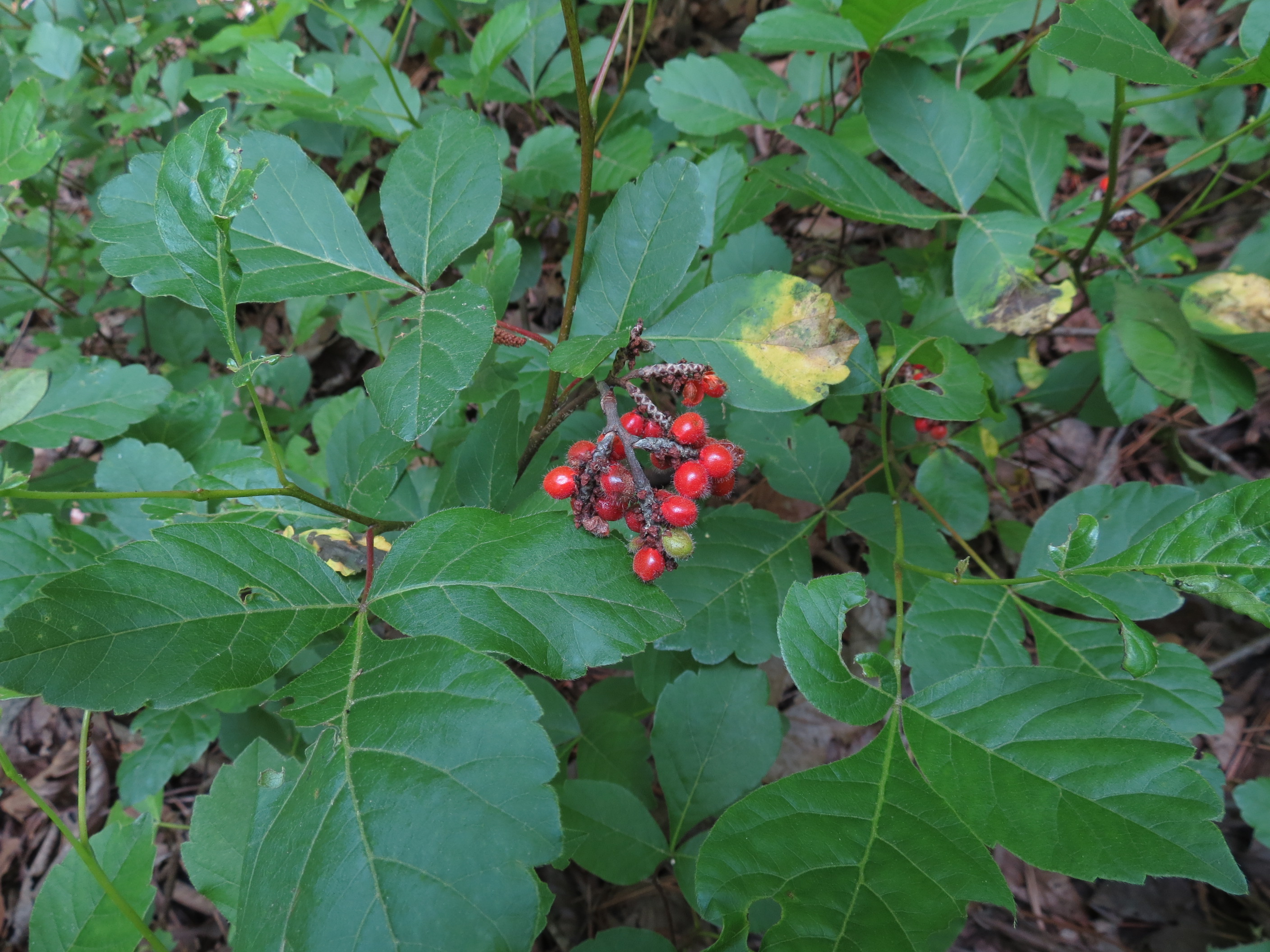

Fragrant Sumac is well suited for a wild garden or natural area where its persistent, slowly spreading habit does not need to be restrained. It does well in many soil types including those that are drier and rocky. Even in partial shade, it can be a nice ground cover of medium height, producing early yellow flowers, reliable summer leaves, and bright fall color. Nectar attracts many insects and the fleshy fruits provide nourishment to birds and small mammals. (The fruits also make a tangy pink lemonade for people.) If needed, stems can be fairly easily removed by pulling and clipping. It is also good for erosion control, but it is browsed by deer.
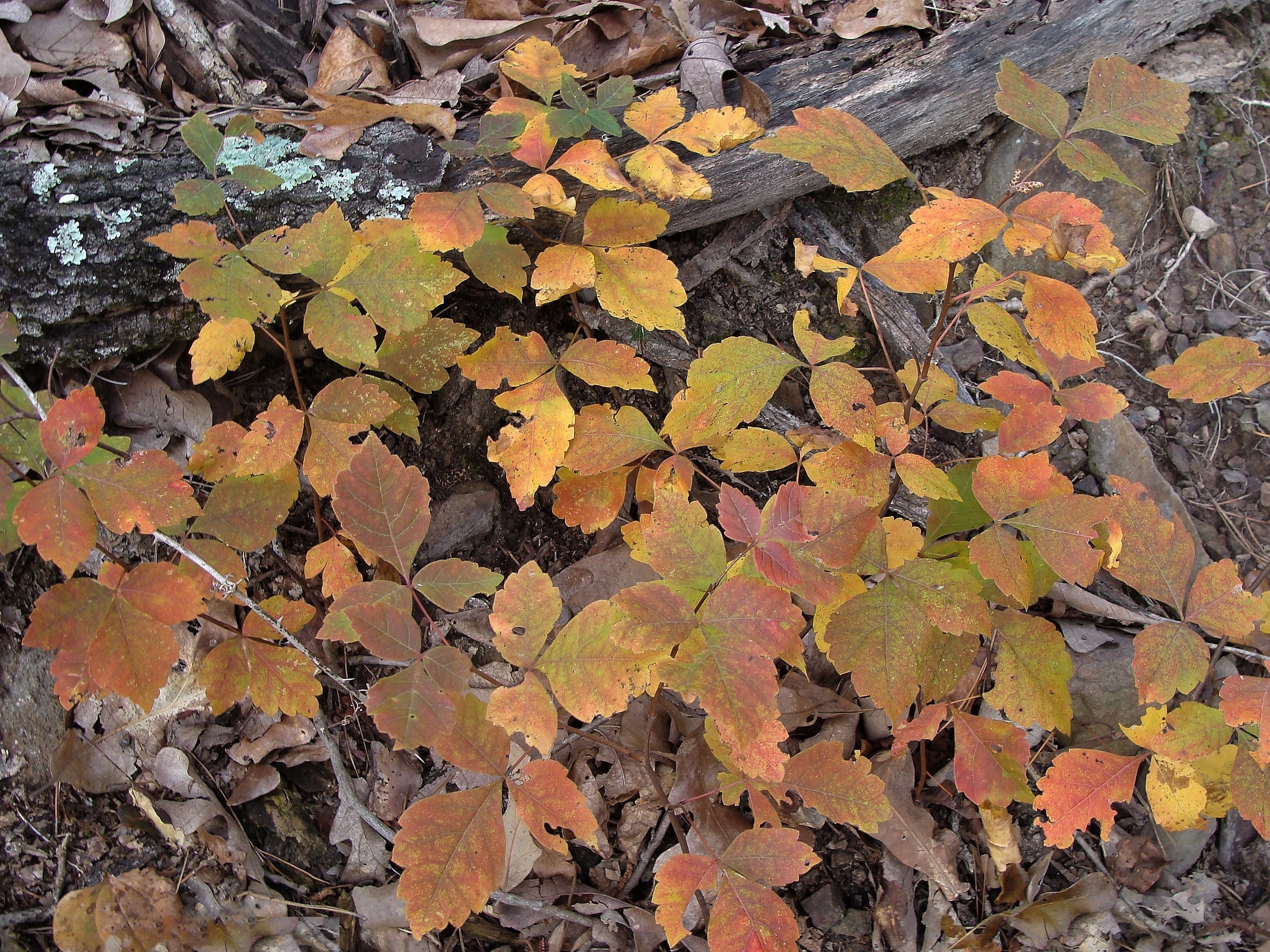
Four other sumacs are found in Arkansas: 1) Tall or Midwestern Fragrant Sumac (Rhus aromatica var. serotina), 2) Winged Sumac (Rhus copallinum), 3) Smooth Sumac (Rhus glabra), and Skunk-Bush Sumac (Rhus trilobata var. trilobata). Winged Sumac and Smooth Sumac are larger, rhizomatous shrubs with pinnately-compound leaves. Skunk-Bush Sumac is similar to Fragrant Sumac in its trifoliate leaves––and has been treated as a variety of Rhus aromatica (as var. flabelliformis) in the past. However, the leaves are much smaller, and this sumac is restricted in Arkansas to chalk glades and barrens in a small portion of Little River County in the southwestern corner of the state. Tall or Midwestern Sumac, another variety of Rhus aromatica, differs from the typical variety primarily in having taller stems, leaflets with more rounded apexes, and flowers that bloom after the leaves begin to grow in the spring. In Arkansas, it grows in calcareous sites in the Ozark Highlands in the north and in the southwestern corner in the state. (Fragrant Sumac is often found in more acidic sites.) Two other species of the family that are likely to also cause confusion are Poison Oak (Toxicodendron pubescens) and Poison Ivy (Toxicodendron radicans). For comparison of these two species with Fragrant Sumac, see “Leaves of Three, Let It Be. . . . Usually”.
Article and photographs by ANPS member Sid Vogelpohl

